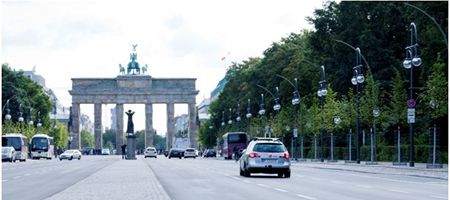A German car traveled over 50 miles without a driver over the weekend, through the busy streets of Berlin.

It covered the 20km between the city’s International Congress Center and Brandenburg Gate four times – and without any incidents, says the Freie Universität Berlin team.
The MadeInGermany autonomous car is a conventional VW Passat modified for ‘drive by wire’. Electronic commands from the onboard computer are passed directly to the accelerator, brakes and steering wheel.
The car recognizes its position on the Berlin streets from a particularly accurate GPS unit and a map of the city. Six laser scanners detect cars or pedestrians, while a rotating laser scanner on top of the vehicle gives up to a million scan points per second to show the 3D structure of the environment.
Cameras can detect the white lane strips and center the car on its lane, as well as identifying traffic lights and their state. During the Berlin test drive, the car successfully negotiated 46 traffic lights during each of its four runs.
Under conditions imposed for the driving permit, a safety driver was behind the wheel during the test.
Professor Raul Rojas, leader of the project, is keen to get cars like this one out and into the hands of the public.
“The standards used to measure safety in autonomous cars will be far more severe than for humans, but once all pieces fall into place, autonomous cars will be safer than cars driven by persons,” he says. “It is just a matter of time.”
Over the next month, MadeInGermany is likely to become a familiar sight on the Berlin streets. The next step is fully-autonomous driving between European cities.






